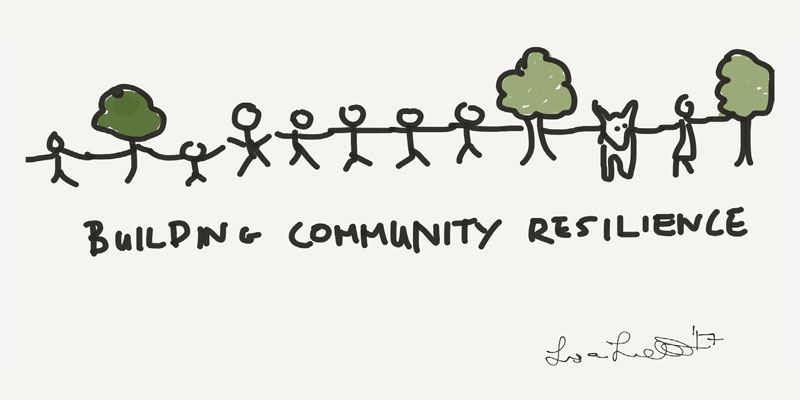Find your Communities
Resilience Indicators
Resilience is the ability of a system or community to withstand impacts from outside. An indicator is a way of measuring that.
Conventionally, the principle focus has been focused on carbon, counting and credits and off-setting. But measuring impacts based solely on CO2 emissions is very limited and comes from the same way of thinking that has caused the problems in the first place!
And the focus on cutting carbon while failing to build local resilience is an insufficient response when you’re trying to address the challenges faced today.
There must be a whole systems approach if we are to plan for adaptation and build
resilience.

So how might you be able to tell that the resilience of your community is increasing? Resilience indicators might look at the following:
percentage of food grown locally
amount of local currency in circulation as a percentage of total money in circulation
number of businesses locally owned
average commuting distances for workers in the town
average commuting distance for people living in the town but working outside it
percentage of energy produced locally
quantity of renewable building materials
proportion of essential goods being manufactured within the community of within a given distance
proportion of compostable “waste” that is actually composted
While some indicators will be universal, many will be place specific and will emerge from the energy descent plan process.
Taking stock of local skills and resources: You can start building a picture of your communities local resources. What are the local networks , knowledge, collective wisdom and skills…?
Both current and potential availability and current and potential requirements will be key to creating a realistic Energy Descent Adaptation Plan or Climate Adaptation Plan.
